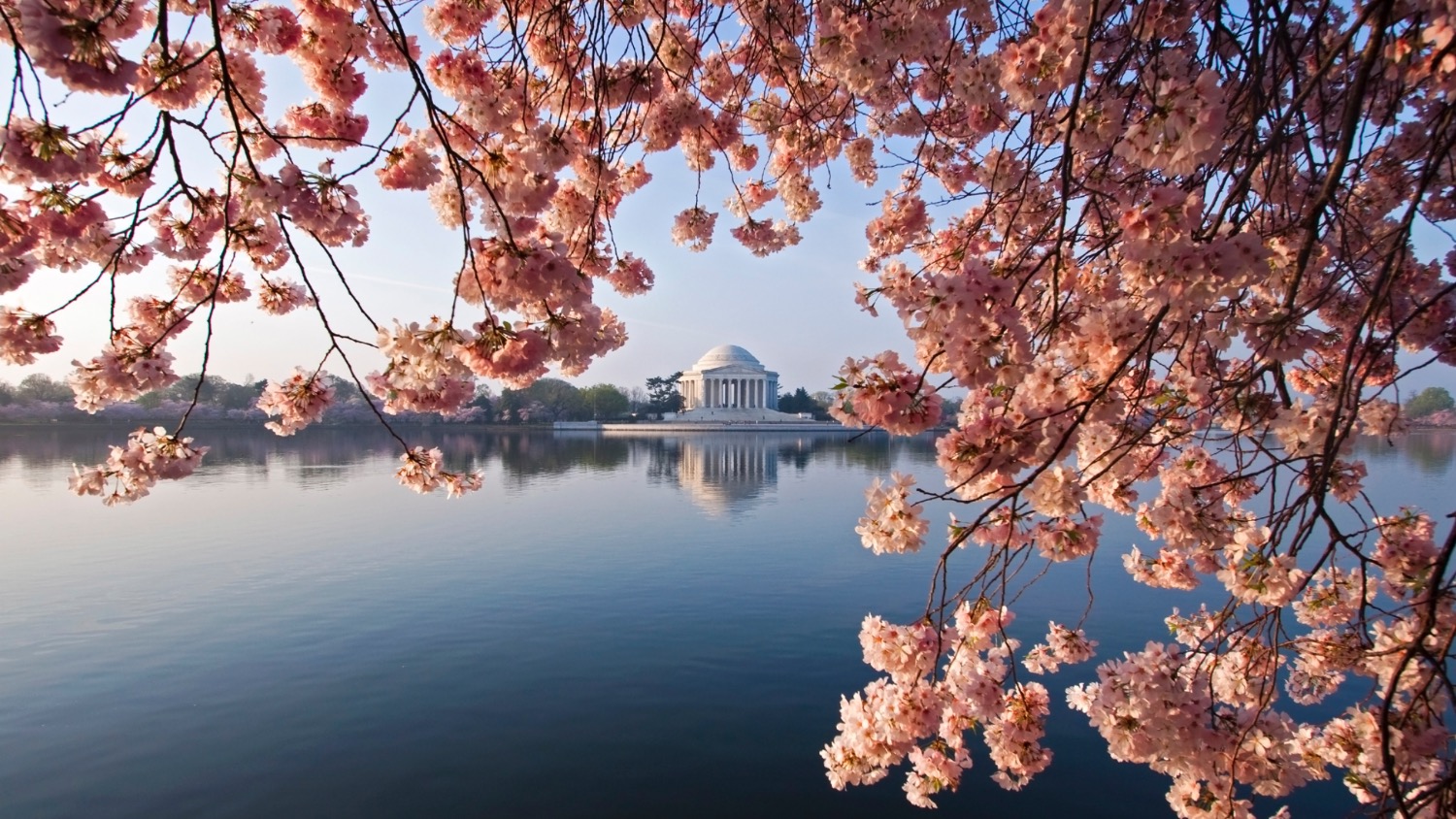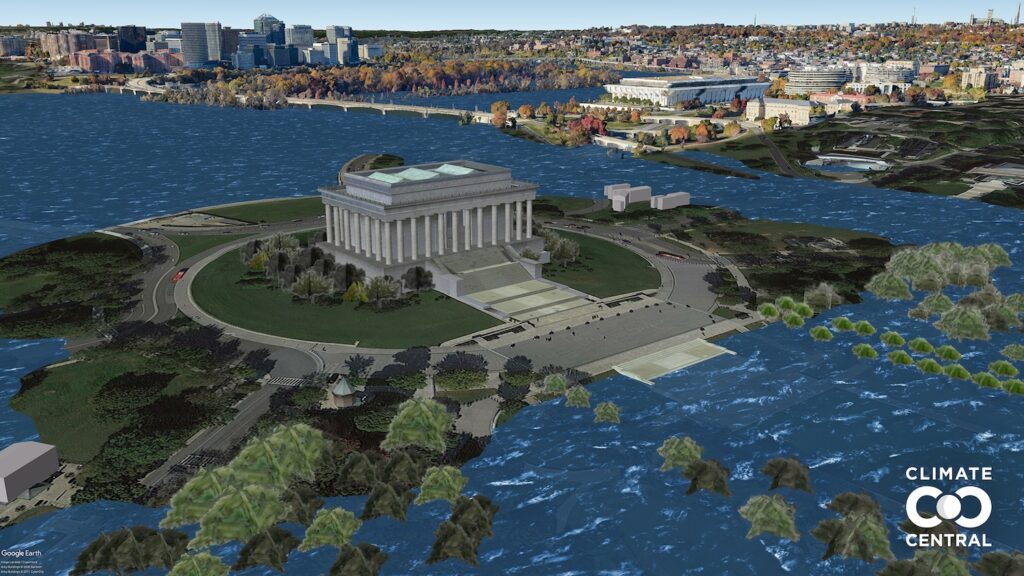Removal of DC’s Cherry Blossoms Reflects Troubling Future For Coastal Forests

More than 1.5 million people flock to Washington, D.C. each spring to enjoy the sight of thousands of Japanese cherry trees blossoming around the Tidal Basin, a reservoir located between the National Mall and the Potomac River.
The trees, which were given to the United States in 1912 by the mayor of Tokyo as a symbol of international friendship, blossom with pink and white flowers in mid- to late March every year. They are among the world’s most popular natural attractions.
But the trees also serve as a prime example of the wide-reaching effects of climate change on forest health, according to Marcelo Ardón, an associate professor of forestry and environmental resources at NC State.
Nearly 160 of the 3,700 cherry trees around the Tidal Basin and West Potomac Park will be chopped down starting in May 2024 in preparation for a $113 million, three-year project to rebuild and raise the seawall around the Jefferson Memorial.
“It’s a great example of where people can see the effects of sea level rise and what’s happening all over the East Coast,” said Ardón, who studies the effects of sea level rise on coastal ecosystems.
Twice a day at high tide, water from the Potomac River flows over portions of the seawall — in part because of sea level rise. Sea levels in the Washington, D.C. area have risen by more than a foot over the last century.
Some of the cherry trees around the Tidal Basin experience regular flooding during high tide, leaving them vulnerable to the effects of saltwater intrusion. Cherry trees are meant to grow on dry land and require fresh water.
One of the cherry trees, affectionately nicknamed “Stumpy” by local residents, is nearly hollow and has lost many of its branches due to flooding. Though it continues to blossom, it will be removed this summer as part of the seawall renovation project.
“Even small changes in sea level can have devastating effects on trees,” Ardón said.

Rising sea levels can cause extreme flooding in coastal areas, especially when a hurricane or tropical storm occurs during high tide. The strong winds can increase tidal levels, pushing saltwater inland through ditches and tidal creeks.
When the saltwater reaches forested wetlands and other coastal ecosystems, it can damage and even kill trees, according to Ardón. The salt can accumulate in the surrounding soil and trigger microbes to produce a toxic compound that in high concentrations can inhibit root growth. It can also draw water away from the roots and out of the tissues.
Unfortunately, the rate of sea level rise is accelerating thanks to the thermal expansion of the ocean and the increased melting of glaciers and ice sheets. The sea level along the U.S. coastline is projected to rise by as much as 12 inches in the next 30 years. By the end of the century, it could rise by as much as 6.6 feet.
Sea level rise is raising salt levels in coastal areas along the entire Atlantic Coast, not just Washington, D.C. As a result, forested wetlands and upland forests are being transformed into large patches of dead trees known as “ghost forests.”
“As these ecosystems turn into marshes, the trees lose their leaves, lose their bark, and can remain standing for up to a decade. The standing dead trees are eerie looking from a distance, and thus that is where the term ‘ghost forest’ comes from,” Ardón said.
For more than 15 years, Ardón has tracked the formation of ghost forests throughout the Albemarle-Pamlico Peninsula of North Carolina. Sea levels in this area are rising faster than the global average and could rise by up to 5 feet by the end of this century. At least 11% of the area’s tree cover has already been taken over by ghost forests.
Many of the area’s ghost forests are products of the approximately four inches of sea level rise that have occurred since the 1990s, according to Ardón and colleagues. It usually takes 10 to 20 years for forested wetlands and upland forests to transition into ghost forests and then eventually marshes, though it can sometimes occur as quickly as five years.

The formation of a ghost forest doesn’t necessarily have harmful effects on coastal ecosystems in the short term, according to Ardón. While he and other researchers know that mass tree mortality can certainly have negative effects, including a loss of carbon storage and biodiversity, they’ve also observed positive outcomes along the North Carolina coast.
A study conducted by Ardón found that dead pine and bald cypress snags in five ghost forests on the Albemarle-Pamlico Peninsula facilitated the movement of greenhouse gases like carbon dioxide and nitrous oxide, but they retained methane — which is responsible for about 30% of the current rise in global temperature.
NC State researchers have also discovered that trees in coastal forests on the Albemarle-Pamlico Peninsula are replaced by more salt-tolerant shrubs and grasses as they transition into marshes, producing a habitat that’s advantageous for some birds and potentially devastating for others.
Ultimately, the impact of ghost forest formation might differ from state to state. For example, while Ardón has found that forested wetlands sequester more carbon than marshes in North Carolina, other researchers have found that marshes actually perform carbon sequestration better than forested wetlands in Georgia and South Carolina.
Ardón said there’s very little that land managers can do to stop coastal ecosystems from transitioning into ghost forests and marshes. While using water control structures and raising soil elevation might protect some of these areas for the next 20 to 30 years, these strategies aren’t likely to maintain low-lying areas in the long term.
Some landowners in coastal areas might choose to cut their trees down to avoid losing out on profits — a strategy that’s certainly feasible if the land is due to inevitably transform into marsh. However, it could also accelerate the transition. Trees, even those that are dying, still keep the water level down by performing evapotranspiration. If the trees are cut down, the water level could rise.
In his studies with students, Ardón has examined the saltwater threshold of different plants. He’s found that bald cypress, a common species in the coastal regions of the southeastern U.S., has a high tolerance for salt. Other species such as oak and loblolly pine, which is commonly grown for paper products on forestry plantations, are more sensitive.
As for cherry trees, it depends on the variety. Those located around the Tidal Basin in Washington, D.C. are Yoshino cherry trees, which have some tolerance to salt but can’t endure prolonged exposure without sustaining damage.
The National Park Service plans to replant more than 200 cherry trees around the Tidal Basin once it renovates the seawall, which according to officials, will be able to withstand about 100 years of future sea level rise.


